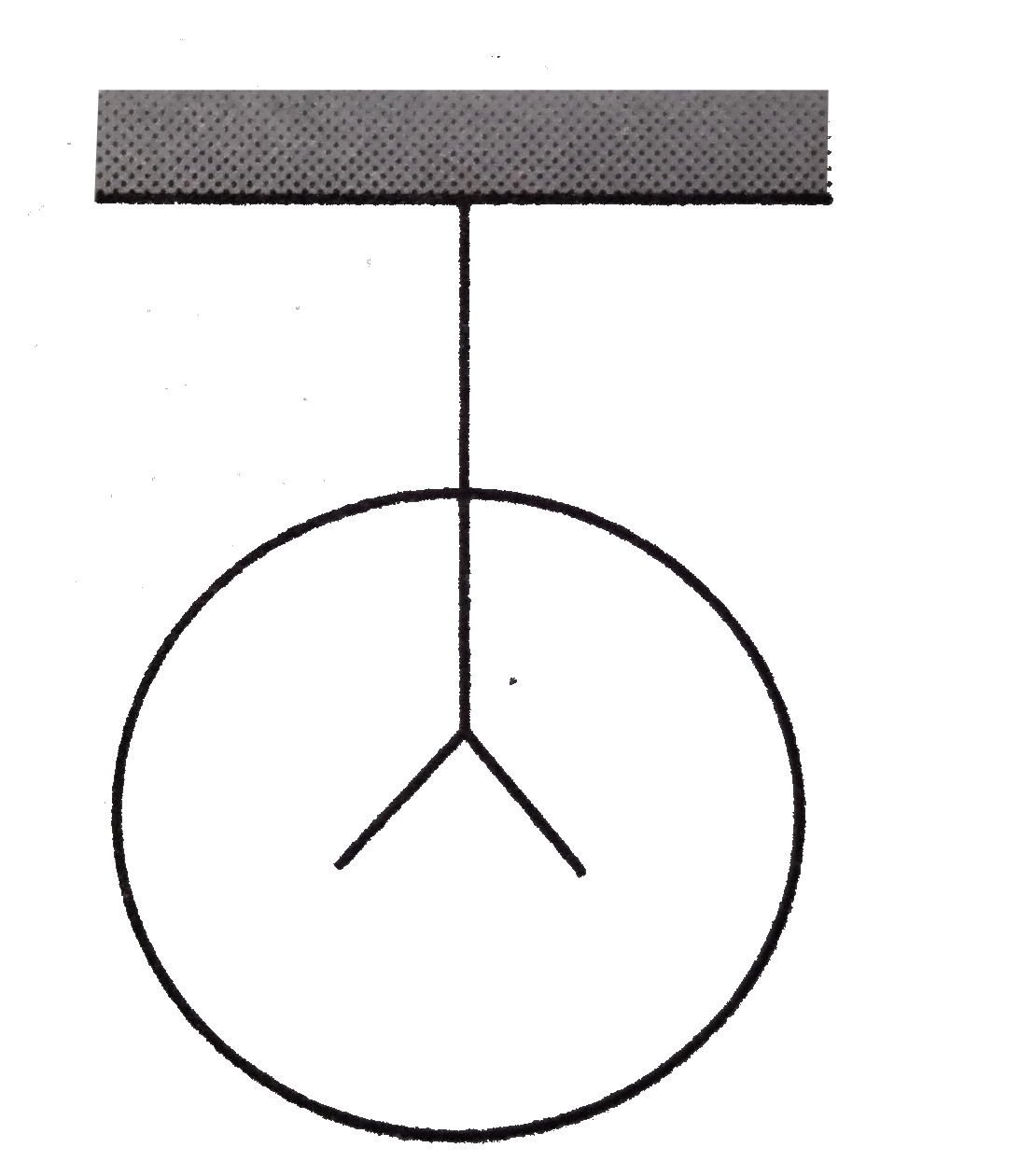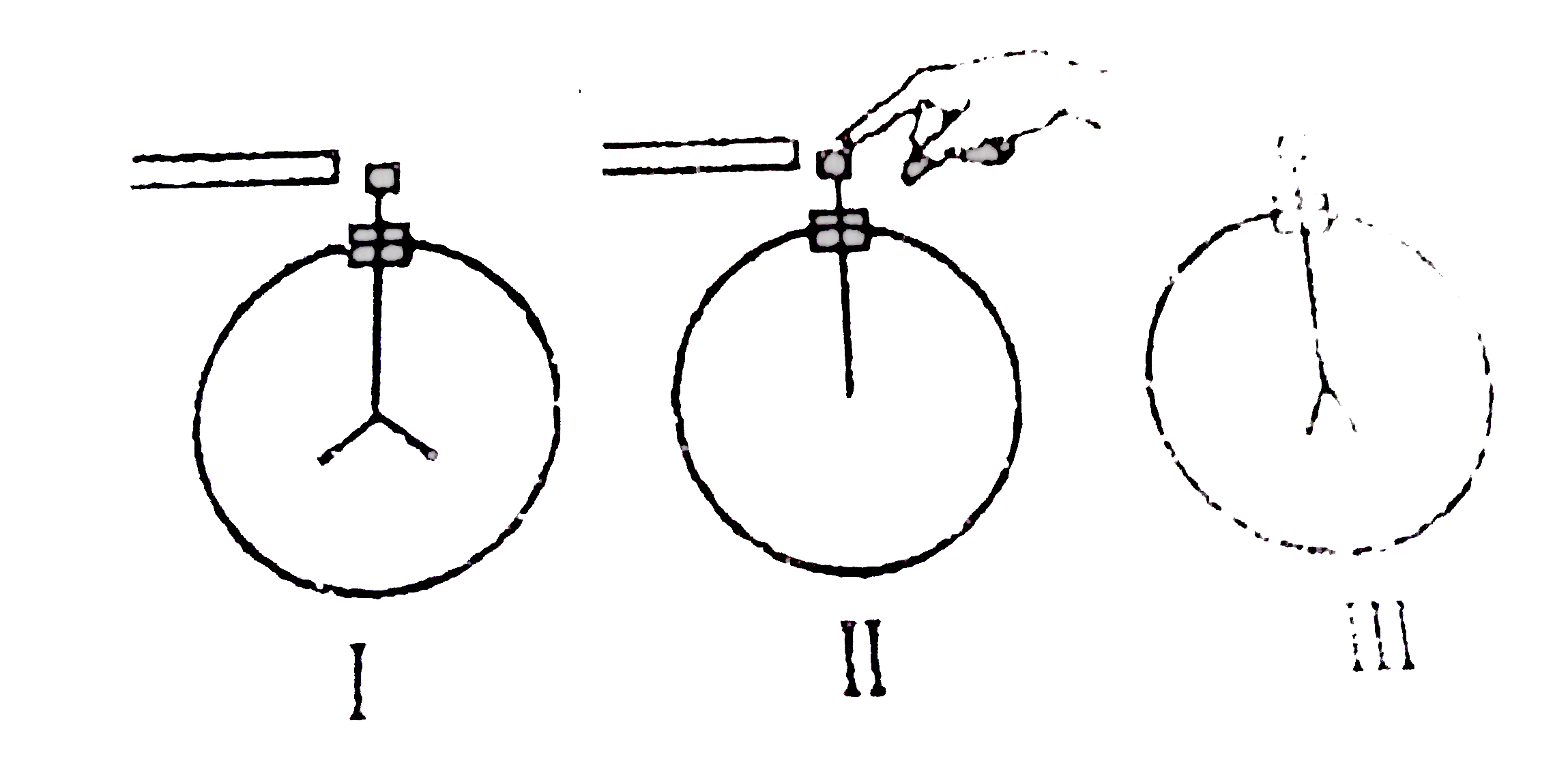An electroscope is given a positive charge, causing its foil leaves to separate. When an object is brought near the top plate of electroscope, the foils separate even further. We conclude

that the object is positively charges.
that the object is electrically neutral.
that the object is negatively charged.
none of these
The correct Answer is:a
The object should be positively charged. Being positively charged, it repels positive charge from top plate towards leaves causing to separate more.
Topper's Solved these Questions
- BOOK - A2ZCHAPTER - ELECTRIC CHARGE, FIELD & FLUXEXERCISE - Electric Field Due To Point Charge25videos
ELECTRIC CHARGE, FIELD & FLUX
- BOOK - A2ZCHAPTER - ELECTRIC CHARGE, FIELD & FLUXEXERCISE - Electric Field And Motion37videos
ELECTRIC CHARGE, FIELD & FLUX
- BOOK - A2ZCHAPTER - DUAL NATURE OF RADIATION AND MATTEREXERCISE - Section D - Chapter End Test30videos
DUAL NATURE OF RADIATION AND MATTER
- BOOK - A2ZCHAPTER - ELECTRIC POTENTIAL & CAPACITANCEEXERCISE - Section D - Chapter End Test29videos
ELECTRIC POTENTIAL & CAPACITANCE
Similar Questions
A positively charged body is brought near to bob of an uncharged gold leaf electroscope , then :
View SolutionWhat will happen to the leaves of an electroscope if a positively charged body is brought near
(a) An uncharged electroscope ?
(b) A positively charged electroscope ?
( c ) A negatively charged electroscope ?View Solution
Knowledge Check
- Question 1 - Select One
An electroscope is given a positive charge, causing its foil leaves to separate. When an object is brought near the top plate of the electroscope, the fiols separated even further. We conclude.
 Athat the object is positively chargedBthat the object is electrically neutralCthat the object is negatively chargedDnone of these
Athat the object is positively chargedBthat the object is electrically neutralCthat the object is negatively chargedDnone of these - Question 2 - Select One
A positively charged body is brought near to bob of an uncharged gold leaf electroscope , then :
Ano charge is induced in the leavesBpositive charge is induced in both the leavesCnegative charge is induced in both the leavesDpositive charge is induced in one leaf and negative in the other - Question 3 - Select One
When a glass rod rubbed with silk is brough near the knob of a positively charged gold leaf electroscope , the gold leaves
ACompletely collapseBMove closerCMove apartDAre unaffected
What will you observe when the metal top of an electroscope is touched with :
a negatively charged object ?View SolutionWhen a plastic rod rubbed with wool is brought near the knob of a negatively charged gold leaf electroscope, the gold leaves
View SolutionYou have just charged an electroscope by bringing a positively-charged glass rod near it. As a result, the leaves of the electroscope have moved apart. What will happen if you now bring a negatively-charged ebonite rod near the brass disc of the electroscope?
View SolutionA positive charge q is given to each plate of a parallel plate air capacitor having plate area A and plate separation d, then
View SolutionWhen a negative charged rod is brought near, but does not touch, the initially unchanged electroscope shown below, the leaves spring apart (I). When the electroscope is then touched with a finger, the leaves collapse (II). When next the finger and finally the rod are removed, the leaves spring apart a second time (III). The charge on the leaves is
 View Solution
View Solution

